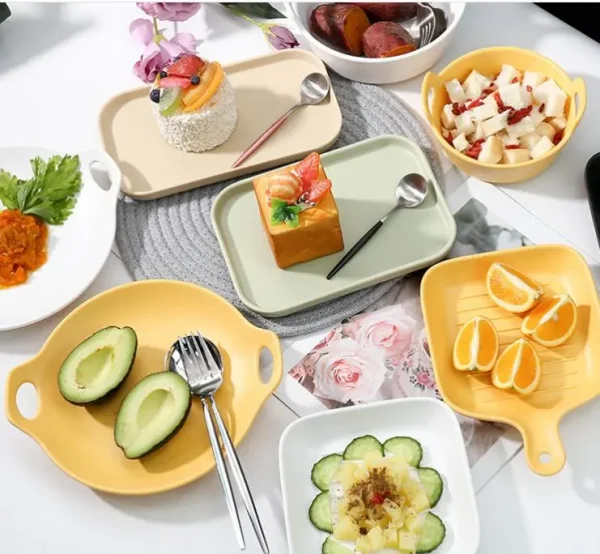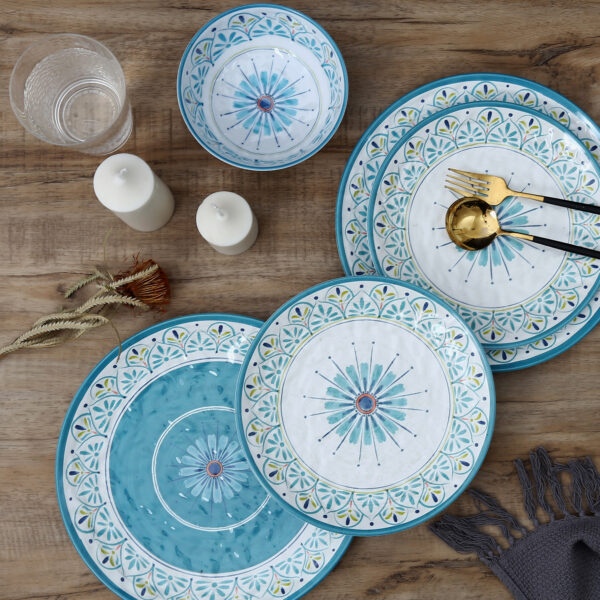The rules of dining etiquette reveal cultural values, social customs, and personal identities of various societies. The way people dine reveals their social values, cultural traditions, spiritual beliefs, and their sense of respect and hospitality.
Different countries have different standards of dining etiquette because what is considered proper in one nation may be viewed as impolite in another. The growing global connection between people requires us to understand and respect the unique dining customs of different cultures.
I. Introduction
Due to the influence of social structures, and religious beliefs, dining etiquette has evolved differently in every culture across continents and centuries. Whether it’s using cutlery in Europe or chopsticks in Asia, dining rituals go beyond eating. They showcase a society’s respect for food, family, and community. Nowadays, with more people traveling around the world and eating food from other countries, it is more important than ever to have cross-cultural understanding at the dinner table.

II. Overview of Table Etiquette in Major Regions of the World
European Table Etiquette
Europe has a rich tradition of dining etiquette, often associated with formality and attention to detail. The proper use of tableware is one crucial element. The continental style is typically followed by Europeans, who hold the knife in their right hand and the fork in their left during meals. While parallel placement signifies that the diner has finished, utensils are arranged on the plate in an inverted V during eating pauses.
- France: The French are proud of the custom of enjoying their meals. Meals tend to be long and focus on presentation and flavor andit is considered inappropriate to rush as slow and deliberate tasting is a form of appreciation for the chef’s efforts.
- Italy: Italians commonly start their meals with an aperitivo and usually a light alcoholic drink paired with small appetizers. To stimulate the appetite and set a relaxed tone. Mealtimes, which frequently involve several courses, are happy and social occasions.
- Social Etiquette: In European settings, conversation at the table is usually light and refined. Sensitive subjects like politics and religion are avoided and keeping eye contact is regarded as a sign of respect and sincerity during conversations or toasts.
Asian Table Etiquette
In Asia, dining etiquette is often rooted in Confucian values such as respect for elders, harmony, and humility. Many East Asian cultures, like China, place a high value on using chopsticks, and using them incorrectly can be interpreted as impolite.
- Chinese Table Etiquette: China has many well-defined table rules. It’s taboo to stick chopsticks upright in a bowl (as this resembles funeral rituals) or to lick them. Seating arrangements are also important. Elders and guests of honor are seated first and served first. Toasting is a social ritual, and it’s polite to clink glasses with others, often while offering words of goodwill.
- Japanese Table Etiquette: Japan places a strong emphasis on respect and mindfulness when eating. Phrases like “いただきます” (Itadakimasu – “I humbly receive”) before meals and “ごちそうさまでした” (Gochisōsama deshita – “Thank you for the meal”). Inappropriate chopstick use is discouraged, such as sticking chopsticks into rice or passing food from chopstick to chopstick. During meals, being quiet and composed is regarded as a sign of respect.
- Korean Table Etiquette: Respect for elders is paramount in Korean dining. Elders begin eating first, and younger diners often pour drinks for their seniors as a sign of honor. During meals, it is deemed impolite to talk loudly or to be extremely expressive. A calm, peaceful atmosphere is encouraged by the Korean culture.
American Table Etiquette
American dining etiquette reflects a blend of traditions with a focus on comfort and informality.
- United States:In the U.S., eating habits tend to be more relaxed. The “zigzag” method of using utensils (cutting food with the knife in the right hand, then switching the fork to the right hand to eat) is common. There is typically less focus on strict formalities and more open and friendly conversation.
- Mexico:Dining in Mexico is often vibrant and communal. Using hands for certain dishes like tacos is not just accepted but preferred and it’s normal to have animated discussions during mealtime since it’s a social occasion.

III. Disagreements Over Eating Patterns
While dining etiquette can be a bridge between cultures, it can also become a source of misunderstanding. Restrictions on diet due to religion are one source of contention. Hindus and Muslims, for instance, abstain from eating beef and pork, respectively. Unintentionally serving such things can cause discomfort or even offence.
Disparities in dining speed between cultures can also lead to conflict, and meals in many Asian countries are more efficient and shorter than those in Europe, which tend to be longer and more leisurely. An Asian dining experience may seem rushed to a Western guest, while a lengthy European dinner may irritate an Eastern guest.
Even utensil use can be confusing. A Western diner may struggle with chopsticks in China or Japan, while an Eastern diner may find it difficult to navigate multi-course meals with multiple forks and knives in Europe.
IV. The incorporation of table manners
The world is seeing a growing blending of dining cultures in spite of these differences. Dining etiquette from various regions is being blended and adapted as people explore international cuisines and global travel becomes more accessible.
The worldwide popularity of Chinese, Japanese, and Korean restaurants demonstrates the culinary integration between different cultures. The restaurants provide chopsticks together with forks and spoons for their customers to use. International restaurants combine Asian decorations with Western service standards to provide a welcoming dining atmosphere for all guests.
Staff training in multicultural dining etiquette has become standard practice for global hospitality chains to make guests from diverse backgrounds feel valued. French bistros commonly serve sushi rolls, while American steakhouses provide vegetarian Indian curry to their customers. The culinary world demonstrates a universal language through food integration, which leads to dining etiquette evolution through cultural exchange.
V. Summary
The customs of dining etiquette across different cultures exist in the same variety as the cultural backgrounds that developed them. Each dining style, from Korean formal dinners to European formal table settings, embodies a unique perspective of the world. The traditions of dining sometimes conflict with each other regarding food restrictions, dining rules, and eating pace, but they also integrate harmoniously in the modern globalized dining culture.
Dining etiquette has evolved from being a set of conduct rules into a celebration of human diversity and shared values because people from various nations continue to share their customs and meals.










